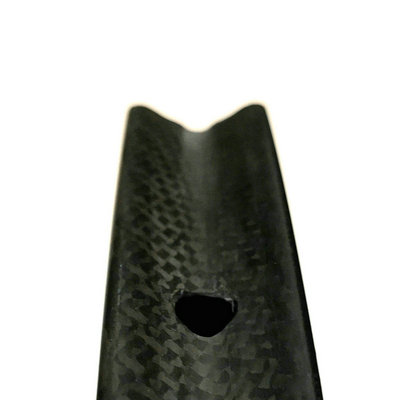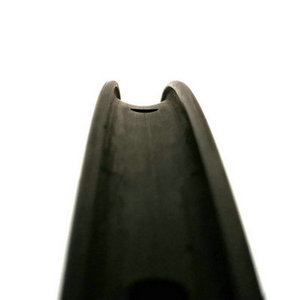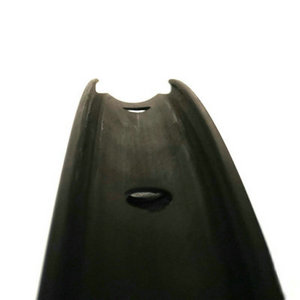The ideal bicycle tyre is light in weight, good in preventing spines, good grip, durable, reasonable in price, low in rolling resistance and comfortable. But these are ideal in the end, in reality, we have to choose between one or more preperties, depending on our actual needs.
The difference between the three different tyres is how to form and hold air chamber. For tubular tyre, the air chamber is completely closed inside the tyre; the clincher tyre needs an inner tube to hold the gas; the tubeless tyre itself is the air chamber, but needs to cooperate with the special clincher tubeless rim.
Different types of bicycle rim (carbonal carbon rims):
|
Rim types |
Tubular rim |
Clincher rim |
Tubeless rim |
|
Ref. pictures |
 |
 |
 |
Let's compare the three different bicycle tyres:
|
|
Tubular tyre |
Clincher tyre |
Tubeless tyre |
|
Use: |
Race, training, off-road, enduro |
Race, training, off-road, commuting, enduro, downhill |
Race, training, off-road, commuting, enduro, downhill |
|
Advantage: |
Light weight, paired wheels are also very lightweight, more resistant to snakebite than clincher tyres |
Simple installation, convenient disassembly, ubiquitous, numerous products |
Excellent anti-puncture performance, can use low tire pressure, repair fluid to provide additional anti-puncture ability |
|
Disadvantage: |
Difficult to install and can not be repaired quickly by the side of the road |
Easy to be "bite" on low tire pressure |
Needs time to installation, not easy to maintaining |
|
Need accessories: |
Tubular wheel, special glue |
Clincher wheels, rim tape, inner tube |
Tubeless wheels, rim tape, tubeless valve, repair fluid sealant |
|
Maintaining: |
Check the tubular tyre tread wear, check the adhesion between tyre and wheel |
Check the tyre tead wear, foreign bodies |
Check the tyre tead wear, need regular inspection and replacement of fluid |
|
Cost: |
Medium and high, although you can buy relatively chep tubular tyre, but the need of the double-faced glue increased the cost |
From high to low, huge range of products. The inner tube is relatively cheap, but it's a contiuing cost. |
Medium and high, the tubeless tyre is often more expensive than the clincher tyre, rim tape and tubeless valve can be regarded as a one-time cost, but the tyre repair liquid will be a long-term cost. |
Tubular tyre: It has long been recognized as a best choice for race level road bikes, widely used by professional cyclists, but because installation and maintenance are difficult and time consuming, tubular tyre have only limited appeal to ordinary cyclists. However, tubular tyre can provide maximum weight savings.
Clincher tyre: there is no doubt about the popularity of the clincher tyre, you can see them everywhere.
Tubeless tyre: as a new product in the market, tubeless tyre has been favored by cross-country enthusiasts because of its excellent anti-piercing performance.
So, it's not difficult to find that each tyre system has its advantages and disadvantages. In general, high end clincher tyre (cotton casing structure) and tubeless tyre have been achieved, or even beyond the performance of tubular tyre. But the tubular tyres are the best choice for those whoe seek to truly lightweight. For most cyclists, the easy maintenance of the clincher tyre has a clear advantage. But the choice of tyre is sometimes not entirely arbitrary, depending on what the existing wheel can be used. After all, the cost of change wheel is much higher than the cost of change tyres.
 +86-592-578 6546
+86-592-578 6546 info@carbonalbike.com
info@carbonalbike.com English
English français
français Deutsch
Deutsch русский
русский italiano
italiano español
español português
português 日本語
日本語 한국의
한국의 Polski
Polski




